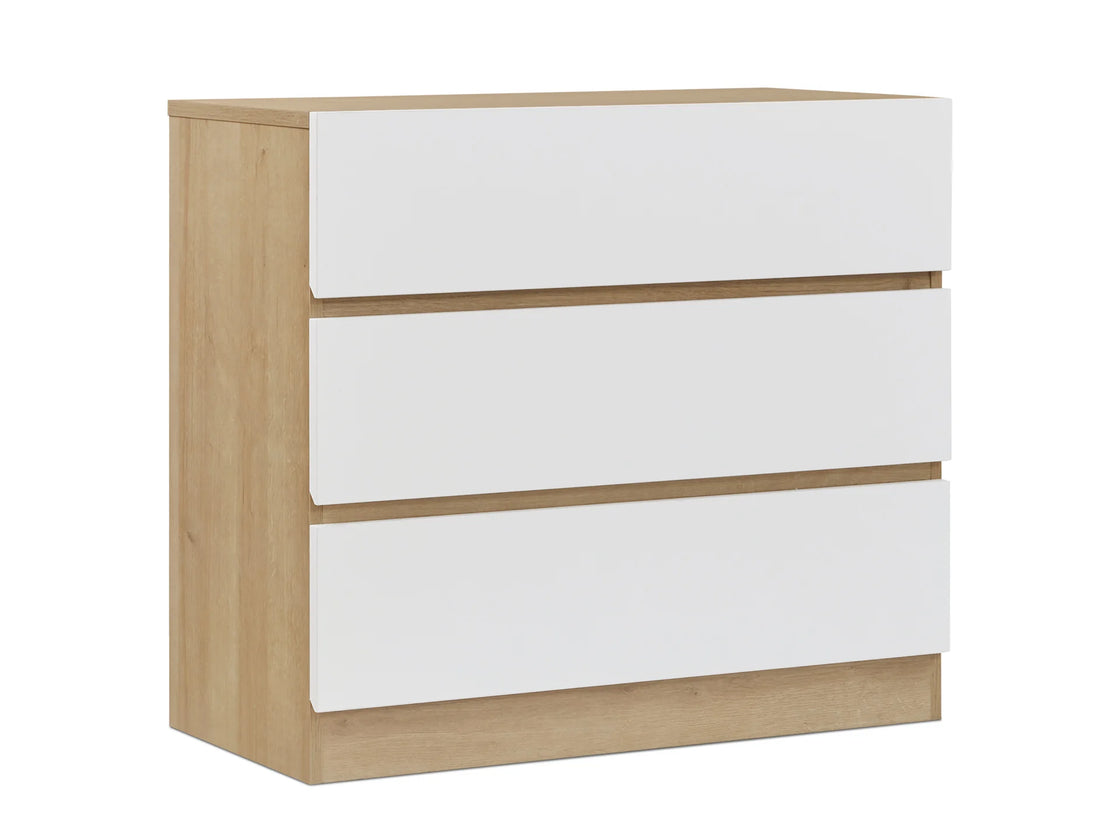Designing Dream Bedrooms: Mastering Furniture Layout for Comfort and Style

Designing a balanced and practical bedroom requires thoughtful planning. Central to this process is the strategic arrangement of bedroom furniture. Essential pieces like the bed, bedside tables, and wardrobes serve not only functional needs but also act as key focal points that define the room's atmosphere and character. Mastering the art of coordinating your bedroom furniture, from selecting the right bed frame to placing storage units cleverly, is crucial in creating a space that is both cohesive and comfortable. This blog will guide you through optimizing your bedroom layout, ensuring that every piece of furniture complements the others, resulting in a harmonious and inviting bedroom.
The Art of Choosing and Placing Bedside Tables
Selecting the right bedside tables involves thoughtful consideration of both functionality and style. These tables should be proportionate to the bed's height, providing easy access to your essentials without straining. When choosing bedside tables, consider the storage they offer and how they complement the overall style of your bedroom. The design should align with your bed and other furniture, creating a harmonious look. For smaller rooms, consider space-saving designs or floating shelves that serve the purpose without overcrowding the floor. The placement of these tables is equally important; they should be easily reachable and provide balance to the bed's aesthetic.
Tip: Choose bedside tables with drawers or shelves to maximize storage space, keeping your essentials organized and within easy reach.

Effective Use of Tallboys and Lowboys
Incorporating tallboys and lowboys effectively into a bedroom's layout can significantly enhance storage without sacrificing style. These pieces are ideal for rooms where space optimization is key. The choice between a tallboy and a lowboy often hinges on the room's ceiling height and available space. Tallboys work well in rooms with higher ceilings, offering extensive storage vertically, while lowboys, being shorter, are suitable for spaces with lower ceilings or under windows. Their placement should be strategic, ensuring they don't obstruct pathways and complement other furniture pieces. A well-placed tallboy or lowboy can not only provide ample storage but also add an element of design interest to the room.
Tip: In smaller bedrooms, consider using the top surface of lowboys for decorative items or as additional storage for frequently used items, maximizing their utility.

Coordinating Drawers and Wardrobes
The arrangement of drawers and wardrobes should be in harmony with the overall layout of your bedroom. These pieces should be accessible, offer ample storage, and maintain the flow of the room. The location of wardrobes is particularly crucial; they should be placed where they are easily accessible yet do not make the room feel cramped. Coordinating their style and color with other bedroom furniture creates a cohesive look. For drawers, consider the ease of access and how they open in relation to other furniture. The choice and placement of these storage solutions can significantly influence the bedroom's functionality and aesthetic appeal.
Tip: For a streamlined look, choose wardrobes and drawers that match or complement your bed and bedside tables in style and color.

Creating a Multi-functional Bedroom Space
In today's living spaces, bedrooms often serve multiple purposes beyond just sleeping. Incorporating multi-functional furniture is a smart way to make the most of the available space. Beds with built-in storage, wall-mounted desks, or convertible seating can serve several functions while saving space. These versatile pieces allow for a clutter-free environment and offer flexibility in how the room is used. When selecting multi-functional furniture, consider how each piece can serve your daily needs while fitting seamlessly into your bedroom's layout and design.
Tip: Choose furniture that can easily transform from one use to another, like a desk that folds away when not in use or a bed with hidden storage compartments.

Space-Saving Tricks: Creative Bed Frame Designs
Bed frames are a central element in bedroom design and choosing the right one can greatly impact the perception of space. Opt for bed frames with built-in storage or those that allow under-bed storage boxes to maximize space usage. Low-profile bed frames can make a room feel more spacious, while elevated designs can offer additional storage underneath. The style of the bed frame should complement the overall theme of the bedroom, and its placement should enhance the room's layout and flow.
Tip: In compact bedrooms, consider a bed frame with storage compartments or drawers to store bedding, out-of-season clothing, or other items, maximizing space without compromising style.

Bedroom Lighting Layout: Creating the Ideal Atmosphere
Lighting is a critical component in bedroom design, influencing both the functionality and mood of the space. A well-lit bedroom can transform the atmosphere, making it feel more spacious and welcoming. Consider a mix of ambient, task, and accent lighting to cater to different needs and times of the day. Ambient lighting provides overall illumination, while task lighting is essential for activities like reading. Accent lighting can highlight architectural features or artwork, adding depth and interest to the room. The placement of lights should complement the furniture layout, enhancing the room's aesthetics without causing glare or shadows. For example, bedside lamps should be at an appropriate height for reading in bed, while overhead lighting should evenly illuminate the space without overpowering it.
Tip: Use dimmer switches for overhead lights to adjust the brightness according to your needs, creating a flexible and comfortable lighting environment.

Practical Tips and Common Mistakes to Avoid
Proportional Balance: To achieve a visually pleasing and organized bedroom, ensure that your furniture pieces are proportionally balanced. Experiment with different layouts to optimize the use of space. Avoid overcrowding the room with too many large pieces, and similarly, don't under-furnish a larger room. The key is to find a balance that creates harmony and flow in the space.
Declutter Strategically: A cluttered bedroom can feel chaotic and cramped. Use smart storage solutions to keep the room tidy. For example, use under-bed storage for items that aren't used daily, and invest in organizers for your drawers and wardrobes. Keep surfaces clear of unnecessary items, and choose décor that enhances the room's aesthetic without overwhelming it.
Comfortable Pathways: When arranging furniture, consider the flow of movement in the room. Ensure there are clear pathways for easy navigation, and avoid placing furniture in a way that obstructs access to doors, windows, or other areas of the room. The layout should facilitate ease of movement, contributing to a relaxed and functional environment.

Conclusion
In conclusion, when arranging bedroom furniture, it's essential to consider the dynamics of your space, the functionality of each piece, and the overall aesthetic you wish to achieve. Careful attention to these factors, coupled with inspiration drawn from practical examples, can transform your bedroom into a personal sanctuary that mirrors your unique style and preferences. A well-planned bedroom layout not only maximizes comfort and utility but also becomes a space where you can unwind, rejuvenate, and enjoy moments of tranquility. By mastering bedroom furniture layout tips, you create more than just a functional area; you craft a special retreat that resonates with your character and lifestyle.

Subscribe To Our Newsletter
Get the latest updates on new products and upcoming sales



